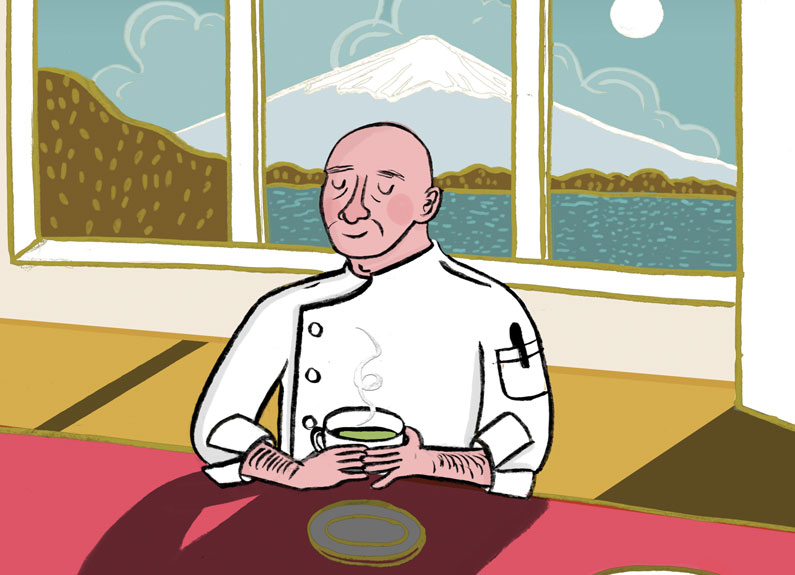
Meals That Changed My Life: Gian Nicola Colucci of Cielo
Cielo executive chef Gian Nicola Colucci fell in love with food as a kid growing up in Turin, Italy. When he left Turin for the first time at 24 to work at Lidia Bastianich’s Felidia in New York, the city opened his eyes to foods and cultures he’d never experienced. Since then, he has worked at luxury hotels that have taken him all over the world and picked up influences from Capri to Hyderabad before landing at the Four Seasons in St. Louis. Here, he shares four meals from four countries that changed his life.
Turin, Italy
“My family [raised] rabbits. In Italy, the city where I grew up – Turin – rabbits are the famous ingredient. [My father] cooks rabbit with potato and tomato; it’s something unique, and today when I try to make it the same way it never comes out like his. I don’t know what he does to it. He doesn’t braise or anything – he puts all the ingredients together in a wood-burning oven, and 40 minutes later he takes it out and it’s perfect! Color, flavor, taste, texture, perfect. I say, ‘How you do that?’ and he says, ‘I don’t know.’
"I do the same – I don’t miss any ingredients – but the result is different. Then I try to sear the meat, roast the potato before, but some ingredients don't completely cook or overcook; the color’s not there. I do it in the exact same oven. When he cooks, he doesn’t pay the attention I pay, but it’s perfect. Maybe one day he’ll tell me his secret. But it’s him – it’s just him. Food is really particular; a magic situation can happen from the beginning to the end, and even with the same ingredients different people give different results.”
Le Bernardin, New York, 1997
“We went to Le Bernardin – it was a kind of crazy moment of emotion. It was my first time in a three-Michelin star restaurant. What I remember is this parsnip truffle soup combined with escargot that was an explosion of flavor. The soup was creamy. Sometimes I joke with my guys that French people just [add] cream to make everything perfect. It was creamy, but the parsnip flavor was strong; a touch of garlic was there. The combination with the snails was amazing. That, for sure, is a plate you remember. When you do something correct, people come back for that plate. For that plate, I want to go back.”
Japan, 2011
“In Japan, I discovered matcha. Of course you can see this ingredient in the United States, but when you go there, you taste matcha in different kinds of items. I remember this matcha store where you can buy the tea, but you can taste [it in] their gelato, sweet items, cookies. That was really nice, to taste how one ingredient can be used in different items. There, I can tell you I tasted matcha in the right way.
"For chefs, it’s important to understand the ingredient, the flavor and how to use it in your style so that it makes sense, so everything is connected completely. Sometimes now in my gelato I use matcha tea; I use it in pastas. You can operate anywhere in the world if you’re able to open your mind, learn and accept different influences.”
Alain Ducasse, Monte Carlo, 2004
“We went out for dinner at Alain Ducasse in Monte Carlo at this beautiful hotel, Louis Cannes. It was a kind of dream to go there to eat. Each plate had a huge component of vegetables, but presented in a different way. At that time, vegetables for me were just a side. I realized that vegetables were the main ingredients – all the other components were the sides. Something changed in my mind – I never thought of that.
"He did a fillet of turbot (a flat fish, really common in Europe with a white, flaky meat, really sweet) with different roots, vegetables, foam, a base sauce and cream. The vegetables became the main component. The fish was there – it was OK, but all the components he put with different textures and combinations and consistency made the plate special, unique. From that moment, I said, ‘I want to change my concept.’ I continue today to increase vegetables in my plates.”
Meera Nagarajan is art director at Sauce Magazine.
Tags : People, Places, Restaurants





